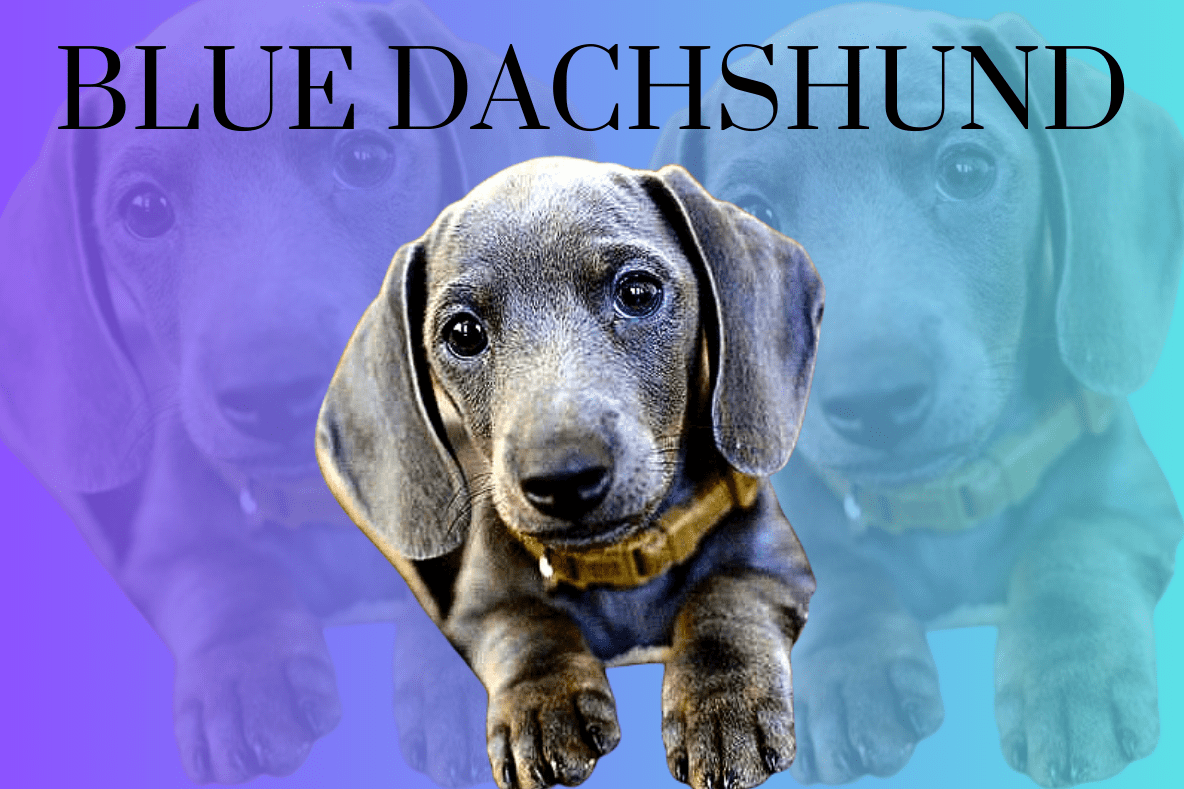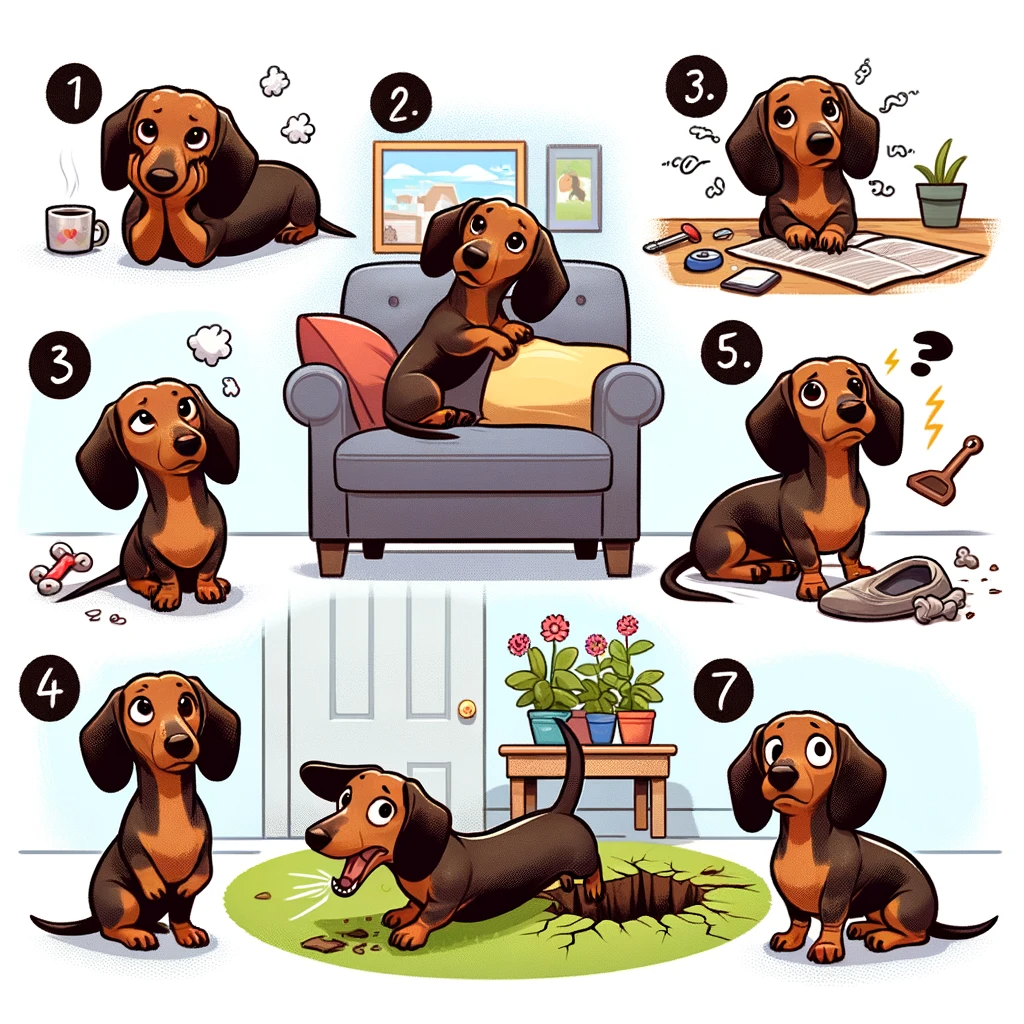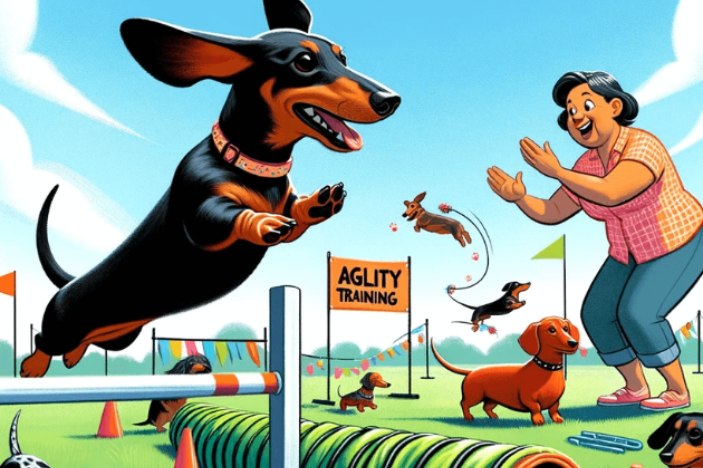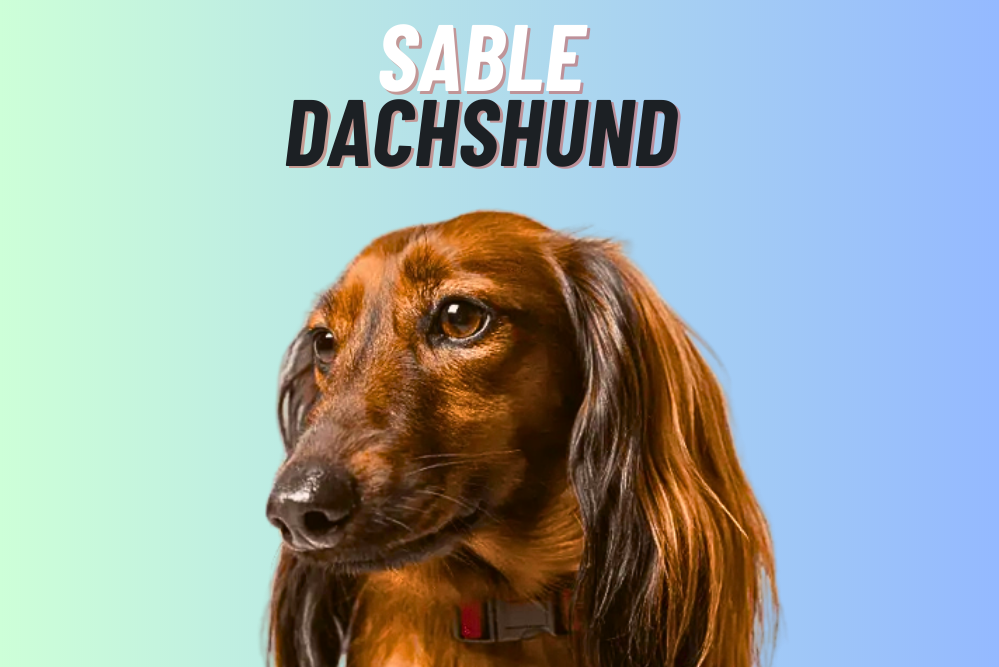A Blue Dachshund is a unique color variation of the Dachshund dog breed. The term “blue” in this context refers to a specific coat color that is essentially a diluted black, giving the fur a distinctive blue-gray appearance. This color variation is relatively rare and is a result of a specific genetic trait.
Like all Dachshunds, the Blue Dachshund is known for its long body, short legs, and bold personality. They share the same characteristics as other Dachshunds, such as playfulness, loyalty, and a strong hunting instinct. Despite their small size, they are brave and can be quite tenacious.
It’s important to note that the blue coat color in dogs can sometimes be associated with certain health issues, such as skin problems. Therefore, Blue Dachshunds may require special care to maintain the health and quality of their coat. Nonetheless, they make charming and spirited companions for those who appreciate their unique appearance and lively character.
Grooming a blue dachshund is similar to grooming any other dachshund, but there are a few specific things to keep in mind.
- Brushing: Blue dachshunds have short, smooth coats, so they don’t require a lot of brushing. However, you should still brush them once a week to remove any loose hair and prevent mats and tangles. A rubber brush or a soft-bristled brush works well for this.
- Bathing: You should bathe your blue dachshund every two to three months, or as needed if they get particularly dirty or smelly. Use a gentle dog shampoo and avoid getting water in their ears or eyes. Rinse thoroughly to avoid leaving any soap residue on their coat.
- Nail trimming: Trim your blue dachshund’s nails once a month or as needed. Use sharp, quality clippers and avoid cutting the quick, which is the pink part of the nail that contains blood vessels and nerves. If you’re unsure, ask your veterinarian or a professional groomer for guidance.
- Dental care: Blue dachshunds are prone to dental problems, so it’s important to brush their teeth regularly. Use a soft-bristled toothbrush and dog toothpaste, and aim to brush their teeth at least once a week.
- Ear cleaning: Blue dachshunds have long, floppy ears that can trap dirt and moisture, leading to ear infections. Clean their ears once a week with a gentle ear cleaner and cotton balls or a soft cloth. Avoid using cotton swabs or sticking anything inside their ear canal.
Remember to praise and reward your blue dachshund during grooming sessions to help them feel comfortable and make the experience more enjoyable for both of you. If you’re not comfortable with grooming your dog yourself, consider taking them to a professional groomer.
Blue dachshund Health Problems
Blue Dachshunds, like all Dachshunds, are prone to certain health issues, some of which may be more prevalent or pronounced due to their unique coat color. The blue coat is caused by a dilution gene, which can sometimes be linked to specific health problems:
- Color Dilution Alopecia (CDA): This is a condition associated with dogs that have the blue coat color. CDA can lead to hair thinning or loss, and sometimes results in itchy, flaky skin or secondary skin infections.
- Intervertebral Disc Disease (IVDD): All Dachshunds, due to their long backs and short legs, are at a higher risk for back problems, including IVDD. This condition can cause pain, nerve damage, and even paralysis.
- Skin Issues: Blue Dachshunds may have more sensitive skin compared to other coat colors. They can be prone to dryness, irritation, and infections.
- Ear Problems: Due to their floppy ears, Dachshunds are prone to ear infections, which require regular monitoring and cleaning.
- Dental Issues: Small breeds often face dental challenges, and regular dental care is essential to prevent problems.
- Obesity: Dachshunds can easily become overweight, which puts additional stress on their backs and joints. Maintaining a healthy weight is crucial.
- Eye Conditions: They may also be prone to certain eye conditions, such as cataracts or progressive retinal atrophy.
Regular veterinary check-ups and a healthy lifestyle are key in managing these potential health issues. It’s also important for Blue Dachshund owners to be aware of the signs of skin and back problems so they can seek veterinary care promptly.
What does it mean if my Dachshund has blue eyes?
It is very rare for Dachshunds to have blue eyes, as the breed standard requires them to have brown eyes. If your Dachshund has blue eyes, it may indicate a genetic anomaly or a health issue.
Blue eyes in dogs are often associated with the Merle gene, which can cause hearing and vision problems. Therefore, it is important to have your Dachshund examined by a veterinarian to determine the cause of the blue eyes and ensure their overall health and well-being.
What color eyes do blue Dachshunds have?
Dachshunds with blue coats can have a variety of eye colors, including blue, brown, green, or a combination of these colors. However, it’s important to note that blue Dachshunds are not recognized by major kennel clubs such as the United Kennel Club (UKC).
Final verdict
There is a wide range of elements that add to the expense of a Dachshund. The size of the Dachshund, the color of its eyes, and the coat of the Dachshund all affect how much a Dachshund will cost. A large Dachshund will cost more than a smaller one because it will require more food, care, and attention.
Dachshunds with blue or green eyes cost more than those with brown or hazel eyes. Blue or green eyes are more expensive to produce than brown or hazel eyes. The most widely recognized question we get asked is how much is a blue dachshund.
The response is that the cost of a blue dachshund fluctuates. It relies upon the shade of the eye, the size of the canine, the coat, and the age. But, you can get a good idea of the cost of a blue dachshund by looking at the prices of similar dogs.




